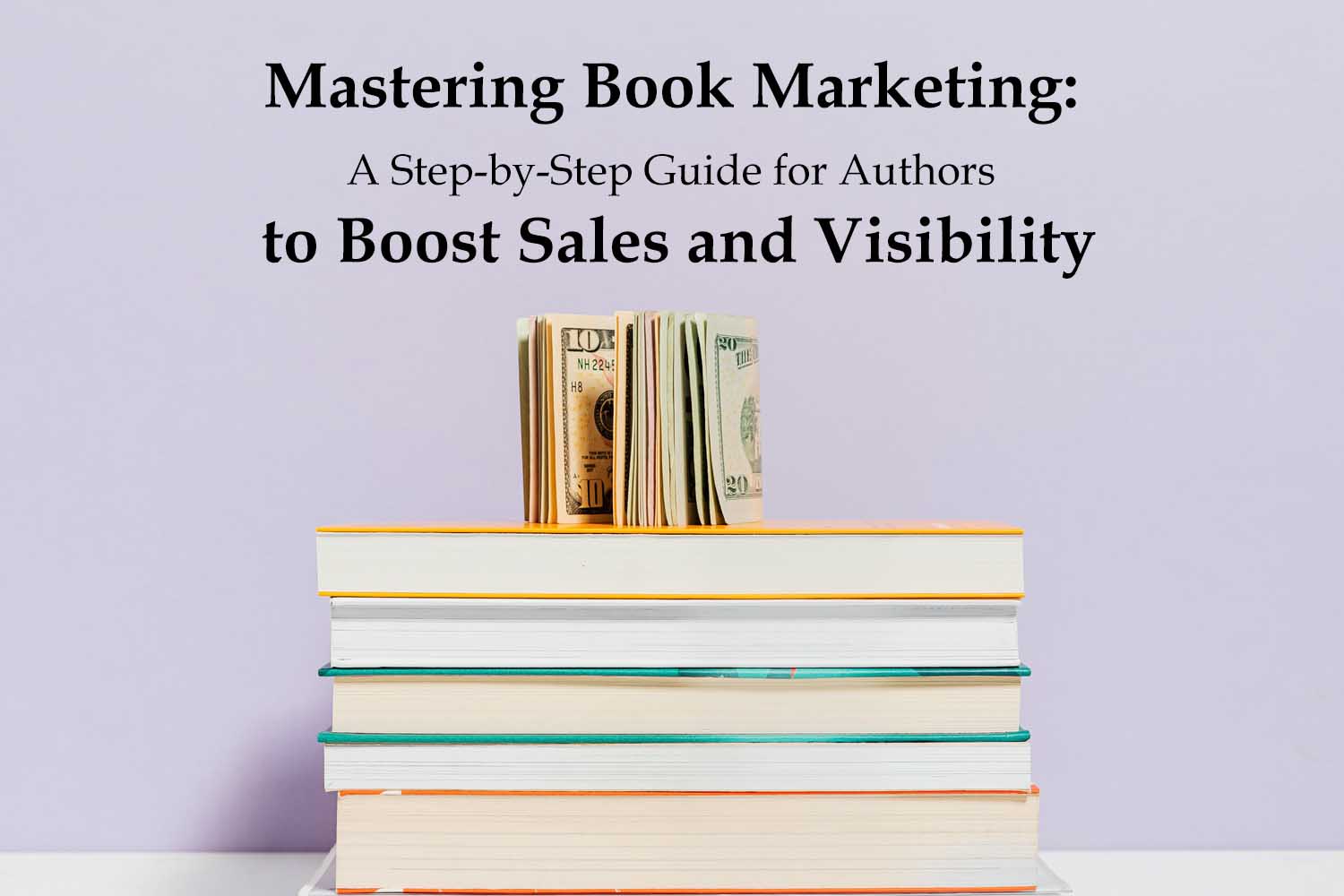Welcome to our comprehensive book marketing guide! As an author, you know that writing a great book is just the first step.
To ensure its success, you need to implement effective marketing strategies to boost sales and increase visibility in the crowded publishing landscape.
Whether you’re a seasoned author or just starting out, our guide will provide you with actionable insights and practical tips to elevate your book marketing efforts to the next level.
Don’t let your book go unnoticed – let’s dive in and unlock the secrets to successful book marketing!
Step 1:
Define Your Book’s Target Audience Identify your book’s ideal readership.
Consider demographics such as age, gender, interests, and reading habits.
Understanding your target audience is crucial as it will shape the marketing strategies and tactics you employ.
Example: If you have written a young adult fantasy novel, your target audience may be teenagers and young adults who enjoy reading fantasy fiction and are active on social media platforms.
Step 2:
Set Marketing Goals Establish clear and measurable marketing goals.
For example, increase book sales by a certain percentage, grow your email list, or boost social media engagement.
Your goals should align with your overall book marketing objectives.
Example: Your marketing goal could be to increase your book sales by 20% within the first six months of launch, or to grow your email list by 500 subscribers in the next three months.
Step 3:
Research the Market Conduct thorough market research to understand the competitive landscape and identify opportunities.
Study similar books in your genre or niche, analyze their marketing strategies, and learn from their successes and failures.
This will help you tailor your marketing plan to stand out in the market.
Example: Conducting market research, you discover that there is a demand for young adult fantasy novels with strong female protagonists, and that there are several successful book blogs and book review websites that cater to this genre.
Step 4:
Develop Your Unique Selling Proposition (USP) Define what makes your book unique and why readers should choose it over others.
This could be the genre, writing style, plot, or the author’s expertise.
Your USP should be compelling and clearly communicated in all your marketing efforts.
Example: Your book’s USP could be its unique magic system or a diverse and inclusive cast of characters that sets it apart from other young adult fantasy novels in the market.
Step 5:
Choose Marketing Channels Select the most effective marketing channels to reach your target audience.
This may include online platforms such as social media, book blogs, book review websites, author websites, and email newsletters.
It could also involve offline channels such as book signings, bookstores, and literary events.
Example: Based on your target audience and market research, you decide to focus on social media platforms such as Instagram and Twitter to connect with readers, as well as book review blogs and bookstagrammers for potential reviews and features.
Step 6:
Create a Content Strategy Develop a content strategy to engage and connect with your target audience.
This could include creating blog posts, guest posts, social media posts, videos, podcasts, and other relevant content.
Ensure that your content aligns with your book’s genre, themes, and USP.
Example: Your content strategy could involve creating engaging blog posts and social media content related to your book’s themes, characters, and world-building.
You could also create teaser videos or behind-the-scenes content to generate buzz and anticipation among your target audience.
Step 7:
Build Your Author Platform Establish an author platform to connect with readers and build your author brand.
This may include creating an author website or blog, setting up social media profiles, and optimizing your online presence. Your author platform should showcase your book, your expertise, and engage with your target audience.
Example: You set up an author website with information about your book, your writing process, and your upcoming events.
You also create and maintain active social media profiles on Instagram and Twitter where you regularly engage with readers, share updates, and participate in conversations related to your book’s genre.
Step 8:
Plan Promotions and Campaigns Create a promotional calendar with a timeline of book marketing activities, campaigns, and promotions.
This could include book launch events, online giveaways, discounts, book signings, blog tours, and other marketing initiatives.
Coordinate your efforts to maximize their impact.
Example: You plan a book launch event at a local bookstore where you will do a reading, sign copies of your book, and offer special discounts to attendees.
You also collaborate with book review blogs and bookstagrammers to host a blog tour and giveaway campaign to generate reviews and social media buzz.
Step 9:
Engage with Readers Interact with your readers and build a loyal fan base.
Respond to reader reviews and comments, engage on social media, participate in book clubs or discussion groups, and connect with influencers and bloggers in your genre.
Building a strong relationship with your readers can lead to word-of-mouth marketing and loyal fans who support your book.
Example: You respond promptly to reader reviews, comments, and messages on social media, and actively participate in discussions and book clubs related to your genre.
You also collaborate with book bloggers and influencers by providing them with review copies and engaging with their audience.
Step 10:
Monitor and Measure Results Regularly monitor and measure the effectiveness of your marketing efforts.
Track sales, website traffic, social media engagement, email open rates, and other relevant metrics.
Adjust your marketing strategies based on the data and insights you gather to optimize your book marketing plan for better results.
Example: You regularly track your book sales, website traffic, social media engagement, email open rates, and other relevant metrics.
Based on the data and insights you gather, you make adjustments to your marketing strategies, such as tweaking your content strategy, trying new promotions, or targeting different marketing channels to optimize your results.
Here’s an example of a book marketing plan presented in a table format:
| Step | Activity | Timeline | Responsible Party | Budget |
|---|---|---|---|---|
| 1 | Define Target Audience | Month 1 | Author | N/A |
| 2 | Set Marketing Goals | Month 1 | Author | N/A |
| 3 | Research the Market | Month 1-2 | Author | N/A |
| 4 | Develop Unique Selling Proposition (USP) | Month 2 | Author | N/A |
| 5 | Choose Marketing Channels | Month 2 | Author | N/A |
| 6 | Create Content Strategy | Month 2-3 | Author | N/A |
| 7 | Build Author Platform | Month 2-3 | Author | N/A |
| 8 | Plan Promotions and Campaigns | Month 3 | Author | $ |
| 9 | Engage with Readers | Ongoing | Author | N/A |
| 10 | Monitor and Measure Results | Ongoing | Author | N/A |
Please note that the timeline, responsible party, and budget may vary depending on the specific book, genre, and author’s resources.
It’s important to customize the plan to fit your own needs and circumstances.
Remember, a book marketing plan is not a one-size-fits-all approach. It should be tailored to your book, target audience, and marketing goals.
Be flexible and open to trying new strategies, and always prioritize building relationships with your readers.
With consistent effort and effective marketing strategies, you can increase the visibility and sales of your book. Good luck!







